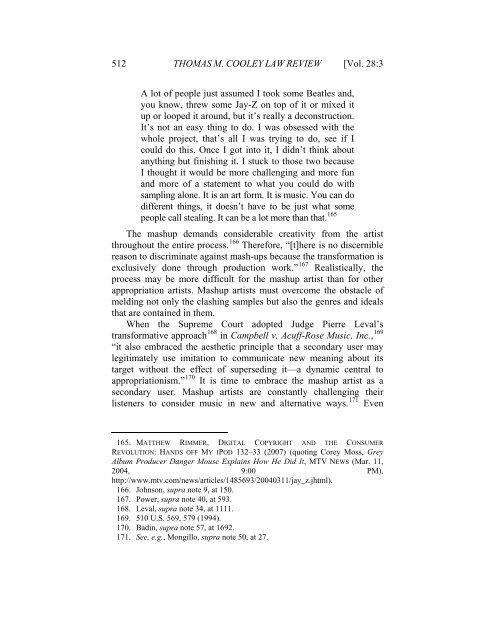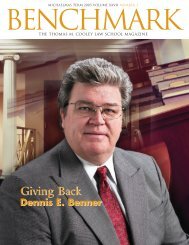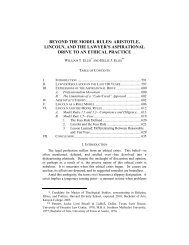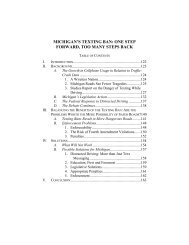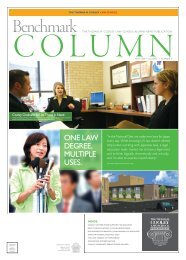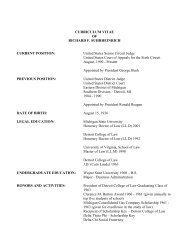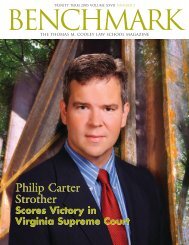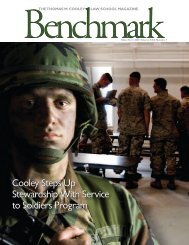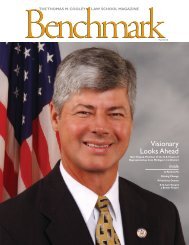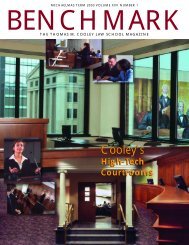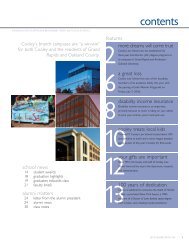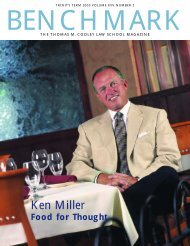Blanch It, Mix It, Mash It - Thomas M. Cooley Law School
Blanch It, Mix It, Mash It - Thomas M. Cooley Law School
Blanch It, Mix It, Mash It - Thomas M. Cooley Law School
Create successful ePaper yourself
Turn your PDF publications into a flip-book with our unique Google optimized e-Paper software.
512 THOMAS M. COOLEY LAW REVIEW [Vol. 28:3<br />
A lot of people just assumed I took some Beatles and,<br />
you know, threw some Jay-Z on top of it or mixed it<br />
up or looped it around, but it’s really a deconstruction.<br />
<strong>It</strong>’s not an easy thing to do. I was obsessed with the<br />
whole project, that’s all I was trying to do, see if I<br />
could do this. Once I got into it, I didn’t think about<br />
anything but finishing it. I stuck to those two because<br />
I thought it would be more challenging and more fun<br />
and more of a statement to what you could do with<br />
sampling alone. <strong>It</strong> is an art form. <strong>It</strong> is music. You can do<br />
different things, it doesn’t have to be just what some<br />
people call stealing. <strong>It</strong> can be a lot more than that. 165<br />
The mashup demands considerable creativity from the artist<br />
throughout the entire process. 166 Therefore, “[t]here is no discernible<br />
reason to discriminate against mash-ups because the transformation is<br />
exclusively done through production work.” 167 Realistically, the<br />
process may be more difficult for the mashup artist than for other<br />
appropriation artists. <strong>Mash</strong>up artists must overcome the obstacle of<br />
melding not only the clashing samples but also the genres and ideals<br />
that are contained in them.<br />
When the Supreme Court adopted Judge Pierre Leval’s<br />
transformative approach 168 in Campbell v. Acuff-Rose Music, Inc., 169<br />
“it also embraced the aesthetic principle that a secondary user may<br />
legitimately use imitation to communicate new meaning about its<br />
target without the effect of superseding it—a dynamic central to<br />
appropriationism.” 170 <strong>It</strong> is time to embrace the mashup artist as a<br />
secondary user. <strong>Mash</strong>up artists are constantly challenging their<br />
listeners to consider music in new and alternative ways. 171 Even<br />
165. MATTHEW RIMMER, DIGITAL COPYRIGHT AND THE CONSUMER<br />
REVOLUTION: HANDS OFF MY IPOD 132–33 (2007) (quoting Corey Moss, Grey<br />
Album Producer Danger Mouse Explains How He Did <strong>It</strong>, MTV NEWS (Mar. 11,<br />
2004, 9:00 PM),<br />
http://www.mtv.com/news/articles/1485693/20040311/jay_z.jhtml).<br />
166. Johnson, supra note 9, at 150.<br />
167. Power, supra note 40, at 593.<br />
168. Leval, supra note 34, at 1111.<br />
169. 510 U.S. 569, 579 (1994).<br />
170. Badin, supra note 57, at 1692.<br />
171. See, e.g., Mongillo, supra note 50, at 27.


